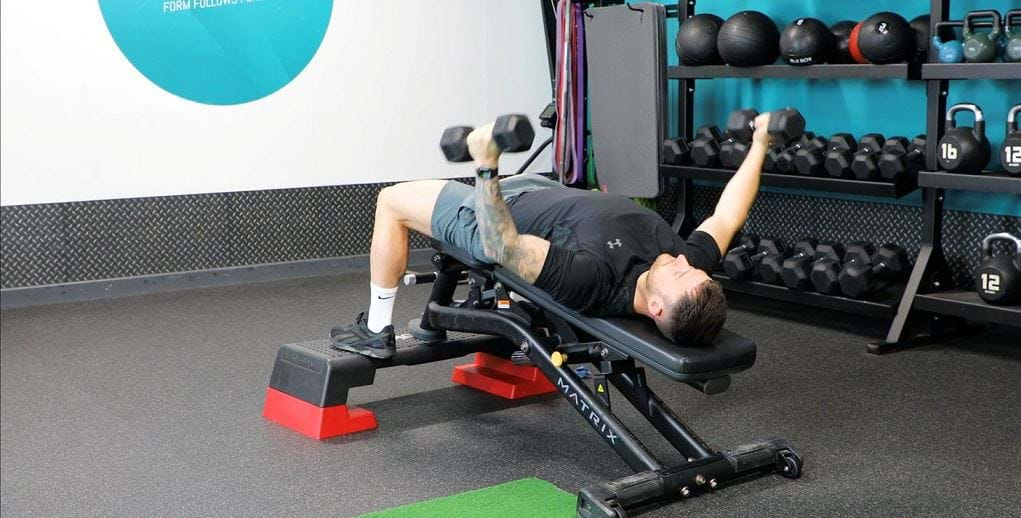Decline Dumbbell Fly
What Is A Decline Dumbbell Fly?

The decline dumbbell chest fly challenges the pectorals, deltoids, and triceps using adduction to bring the dumbbells into the midline of the chest. By performing the chest fly on a decline bench, more focus is shifted off the shoulders and upper chest, with the lower portion of the chest (known as the sternal head) targeted to a greater degree.
Many chest exercises involve a pressing movement, whereas the fly uses adduction to move the arms. This works the chest muscles while stretched, offering a different challenge, and helping to strong, defined pecs.
The decline fly also helps to open the chest muscles and improve scapular retraction which can help to reduce upper back pain, tightness in the upper body, and poor posture.
Check out some other chest fly variations: dumbbell floor flyes, single arm flyes, machine flyes, cable flyes, seated cable flyes
Commonly Asked Questions On Decline Dumbbell Fly
Decline dumbbell flyes challenge the pectorals, deltoids, and triceps. Compared to other fly variations, decline flyes place a greater focus on the lower chest muscle known as the sternal head.
Decline flyes are an effective movement if you’re looking to build chest muscle, particularly in the lower chest. Incorporating a variety of fly and pressing movements will provide well rounded chest training.
Decline dumbbell flyes help to build strength and mass in the chest muscles, particularly in the lower chest, improve shoulder retraction and stability, and work the core. This exercise can also help to open up the chest and reduce tightness, which can help with posture and upper back pain.
Dumbbell fly variations can pose risk to the shoulder when performed incorrectly. Cable flyes and machine flyes have lower risk while still working the muscles through adduction.
Decline Dumbbell Fly Tips
It’s important to remember that the decline dumbbell fly will require less load than other chest pressing movements. Having a manageable load and ensuring correct form helps to protect the shoulder joint from coming under too much stress. It can be tempting to think more range of motion is best, but you should lower the dumbbells no further than chest height.
The setup of the decline bench means the head is lower than the feet and depending on your height, you may be unable to keep your feet flat on the floor. Having the feet planted helps to keep the back on the bench and prevent the lumbar spine from overextending. Options include using an ab bench so you can secure your feet in the foot support, or placing a step at the bottom of the decline bench and planting your feet on this.
How To Do Decline Dumbbell Flys
Set up the bench so its at a 30-degree decline, then lie back so your head and back are supported against the bench and your feet are planted on the ground.
Press the dumbbells up so they’re in line with your chest, palms facing each other, with a soft bend in the elbow.
Squeeze the shoulder blades back, then take a deep breath as you slowly lower the dumbbells in an arc direction. Stop when the arms are almost parallel to the ground and dumbbells are in line with your chest.
Breathe out as you squeeze your chest to push the dumbbells back together.
If you’re not sure if any of the above exercises are suitable for you, please consult your doctor before you start it. Need guidance on how to perform the exercise? Ask a personal trainer at your gym.